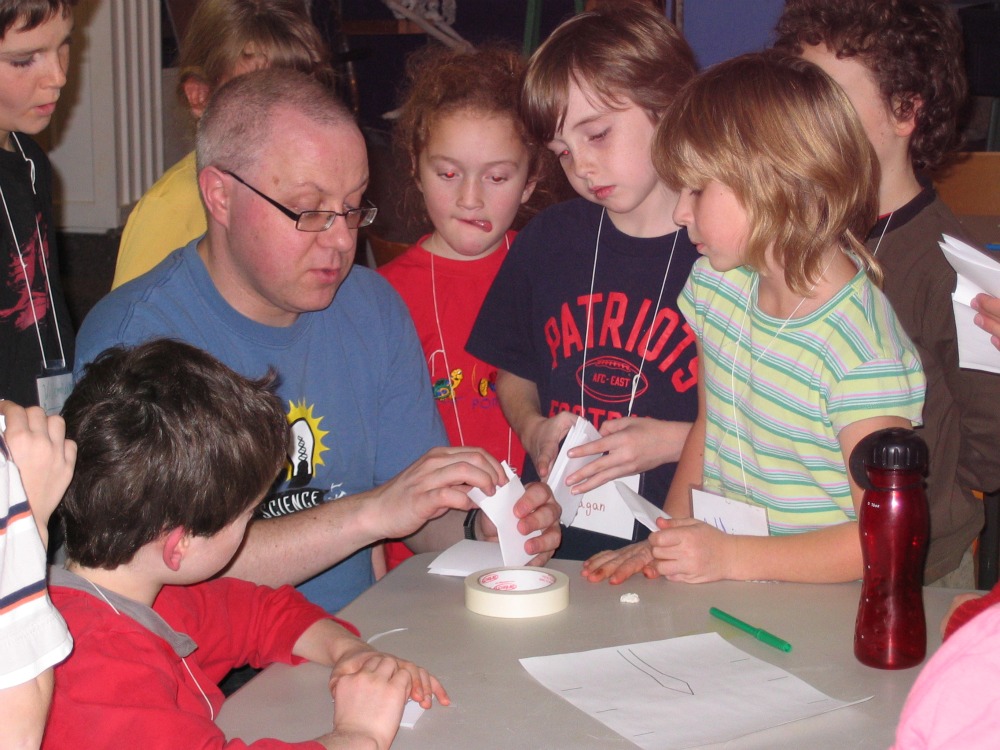 When Michael Edwards moved from Aberdeen, Scotland, to New Brunswick, Canada, he intended to earn a PhD in biology. But he had to abandon that plan when he developed an allergy to the potato beetles he was working with.
When Michael Edwards moved from Aberdeen, Scotland, to New Brunswick, Canada, he intended to earn a PhD in biology. But he had to abandon that plan when he developed an allergy to the potato beetles he was working with.
The doctoral program’s loss was informal science’s gain; reasoning that he had enjoyed the teaching aspect of his PhD program more than the research, Michael volunteered at Science East in Fredericton (New Brunswick), where he soon became the center’s Director of Programming.
Michael has become a pro at finding high-quality hands-on science activities. He scours the internet, Googling his way around; when he stumbles on the inevitable outdated sites with bad science or broken links, he quickly moves on.
When he learned of howtosmile.org at the recent Association of Science & Technology Centers’ annual conference, he was smitten—and relieved. “My favorite feature is simply the reliability of the site,” he says. “We always get asked by teachers and parents about where to go on the internet to find good science activity ideas. Now I can happily send them to howtosmile.org and know they will find something useful.”
SMILE: How did you end up at Science East?
Michael: I had been to science centres before and loved the learning environment they offered, so when I heard of one starting in Fredericton I got in touch with them and started doing some stuff for them as a volunteer—that was back before they even had a permanent centre. While I wasn’t really paying attention, it turned into a full-time job. Fifteen years later I’m still doing it.
Science East, built in the former York County Gaol (Jail), is the only science centre in the province of New Brunswick. We’re a little on the small side—only 9 full-time staff—but we go all over the province and work with all ages, from pre-kindergarten all the way up to university students and teachers.
I love trying to build stuff, test out ideas and mess about with them to see what happens. It doesn’t always turn out successfully, but that’s half the fun.
SMILE: What piqued your interest in science, way back when?
Michael: Like so many people involved in science education, I had a teacher who actually nurtured all my questions and gave me books and other things to help deal with my curiosity. And that continued throughout my time in school, even in university.
SMILE: What’s your favorite howtosmile.org activity and why?
Michael: I love the Magnus Glider for a few reasons. First of all, I love how easy it is to make, and nobody ever expects that it will fly. Then when you show them, they can’t stop playing with it. I also love the flexibility of it—you can modify and change it in so many ways as you play with the concept. Finally, I love how howtosmile.org finally gave me a name for the activity. I always just called it the Flying Cups. but Magnus Glider sounds a lot more impressive.
SMILE: Do you read the SMILE blog?
Michael: I’ve enjoyed the series of frog articles for no particular reason. Learning that there is a toad that smells of peanut butter amuses me immensely.


* You can follow any responses to this entry through the RSS 2.0 feed.